- Home
- H A CULLEY
The Wolf and the Raven Page 2
The Wolf and the Raven Read online
Page 2
Prologue
September 808 AD
Sigvard, King of Agder, stood at the prow of his drekar as his small fleet entered the fjord which led to his capital at Arendal. He had good reason to be pleased. He had spent the summer raiding the coast around the Baltic Sea and, on his way home, the Swedish coast in the straight known as the Kattegat. He had avoided the Danish coast on the west side of the Kattegat for the simple reason that his wife’s brother was jarl of the area around the Limfjord in Northern Jutland.
He wasn’t the only king or jarl to be raiding in the Baltic that year and many of the settlements he came across had already been raided. Plunder had therefore been limited and, as his jarls and their warriors followed him because of the rewards to be gained, morale on the voyage home had been low.
That was why he decided to pillage the east coast of the Kattegat. It was risky as a sensible man doesn’t defecate in his own neighbourhood; it’s too easy for those raided to retaliate. For that reason they didn’t take any prisoners to keep or sell as thralls in case they escaped and identified their captors. So they slaughtered everyone in the five places they attacked. They also took the precaution of rowing into shore, even if the wind was favourable. Sails could be seen from a distance and they were painted with the owner’s device - in Sigvard’s case a black raven on a red sail - or dyed in distinctive stripes of colour.
Even the infants were killed, but such callous behaviour didn’t seem to bother him or his men. Life in Norway was tough and they were unable to survive on what they could grow or catch in the sea. Raiding was a way of life.
He had left his wife pregnant and the baby would be due about now. They had children before this one but they had all died in infancy. This time the godi had sacrificed several animals to ensure that the child survived. Furthermore Sigvard’s sister, who was a völva, had predicted that the baby would be a boy whilst in a trance. He would grow up favoured by Odin, the All-father, and become a great hero.
Sigvard was sceptical - his sister had been wrong in the past – but the prediction that this child would survive had prevented him from disposing of his wife and taking another to his bed.
As was usual when the longships returned from months away, the whole population of Arendal came down to the jetties that stuck out from the steeply sloping shingle beach like the talons of an eagle to welcome their men home.
All five ships followed him in, even the three belonging to his jarls. This evening the spoils would be divided and everyone would drink themselves unconscious in celebration of a successful summer’s marauding.
That evening Sigvard had more reason than anyone else present to get uproariously drunk. The day before he returned his wife had given birth to a lusty boy. The child was named Ragnar and in due course he would acquire the nickname Lodbrok – hairy breeches.
PART ONE - RAGNAR LODBROK
THE RAVEN
Chapter One – The Raid
Summer 821
Ragnar felt as if his lungs would burst as he struggled to swim through the icy waters. His limbs were so cold that he couldn’t feel them and still he was a long way away from the ship which represented safety. All Norse boys were put through a tough regime from the age of ten onwards and not all survived to start their training as warriors a few years later.
The games they played as children were intentionally rough. Broken bones were common and those who gave up under the harsh training system would never become warriors. They could remain as bondi but they would have to hire a warrior to fight in their place when necessary.
That wasn’t even an option for Ragnar. As the king’s only son he would rather die than fail. How could he expect men to follow him in due course if he couldn’t do everything they did, and excel at it?
He struggled against the numbing cold and his failing limbs which, paradoxically, felt as if they were on fire. He gritted his teeth and struggled to cover the final hundred yards to the waiting snekkja. Now he could faintly hear the encouraging cries of a few of his friends who had reached the longship ahead of him and he put renewed effort into his strokes. Exhausted, he reached the side of the snekkja and willing hands reached down to pull him from the water.
He collapsed onto the deck and someone wrapped a sheepskin around his shoulders. After a minute or two he felt a bit better and glanced up and saw another boy being helped aboard. There were only two left in the sea now; one was only ten or so yards from the ship but the last one, a close friend of his called Gunnar, was struggling. As Ragnar watched, the boy disappeared beneath the waves. He came up again only to vanish moments later.
Still shivering with fatigue and cold, Ragnar got to his feet and, before anyone could stop him, he dived over the side and started to swim to where he’d last seen Gunnar. When he reached what he thought was the spot he dived down with his eyes open and scanned the clear water for his friend. He was about to give up when he saw him struggling to reach the surface again.
By now Ragnar was close to blacking out due to lack of air and his limbs felt as though they weighed a ton. Making one last effort he reached Gunnar and, grabbing the belt that held up his trousers, he hauled him to the surface. They both sucked in lungfuls of the icy cold air whilst they struggled to tread water. Thankfully the crew of the snekkja had hauled up the anchor and rowed towards them. A few minutes later both boys were pulled aboard and they fell into blissful unconsciousness.
Far from being praised for his heroism, Ragnar was roundly chastised by Thorkel, an old warrior who everyone called ‘uncle’ and who was responsible for training the boys.
‘You put your own life in danger to save someone who wasn’t strong enough to pass the test. Now Gunnar will have to do it again tomorrow and without you there to help him.’
‘Tomorrow? But he won’t have recovered sufficiently.’
‘Do you think that a foe will give you time to recover? There is no such thing as fairness in battle, Ragnar. It’s time you learnt that. Furthermore, tomorrow I’ll anchor the ship a little further out from the shore, and you will stay well away. Gunnar must pass the test on his own.’
However, unbeknownst to anyone, Ragnar stole some goose fat that evening and before dawn he covered Gunnar’s body in it. As the swimming test had to be done in the clothes a warrior normally wore on board ship, his thick woollen tunic and trousers would cover the whiteness of the fat.
This time Gunnar just managed to reach the snekkja unaided. When he was pulled aboard Thorkel lifted his tunic and saw the remains of the goose fat that had coated his back. He knew that the person responsible was Ragnar and for a moment he thought of telling his wife that Ragnar had been pilfering her larder. He would be soundly beaten as any instances of theft were taken seriously, but he admired the boy’s initiative and his loyalty to his friend, so he said nothing.
As was common amongst boys born to jarls and kings, Ragnar had left his father’s hall when he was ten and had gone to live with Thorkel. Whereas King Sigvard’s hall was a large longhouse capable of housing himself, his wife, his hirdmen and his many thralls, Thorkel lived with his wife, boys he was fostering and his thralls in a much smaller hall. He himself had been a member of Sigvard’s father’s hird until he married. Now he was called uncle by all; a term reserved for the elderly warrior who was regarded by all as their mentor and example.
Thorkel was a hersir – a leader of warriors – and a wealthy landowner, but he preferred to live in the main settlement of Arendal. His eldest son managed his extensive estate for him and collected the rents from the various bóndis who leased their farms from him. His other son looked after the flotilla of small knarrs he also owned, which were mainly used for fishing.
He was the shipmaster of the second largest drekar in Arendal - the largest being owned by the king – and could usually find the seventy men needed to crew it from the bóndis who acknowledged him as their hersir; that is his tenants, their families and those involved in the fishing business who were not thralls.
U
nlike many hersirs, he owed no fealty to a jarl, but only to the king.
The last test faced by Ragnar was the games organised to celebrate the end of winter and the start of summer. To a Viking there were only two seasons – the one where the cold and snow made mere survival something of a struggle and the one where they could go raiding. He was now thirteen and he was determined to prove himself as a warrior so that he could be taken on as a member of a longship’s crew.
The fact that he was the king’s son was no guarantee of that. Some kings and jarls favoured their sons but Sigvard didn’t believe in spoiling Ragnar. If he was accepted as a warrior after the games he didn’t suppose for one minute that the king would take him with him; he would have to find another shipmaster. Only once he’d proved himself during a raiding season would Sigvard consider letting him join him.
In truth, Ragnar thought of Thorkel as more of a father than Sigvard.
-℣-
Whilst the men celebrated the end of winter with a marathon session of feasting, drinking and wrestling bouts, the boys who were on the point of leaving their childhood behind were expected to display their stamina in running races and their skills as swordsmen.
The latter consisted of a knockout contest with the winner of each bout proceeding to the next round. A boy won his fight by either disabling his opponent with a blunt sword or disarming him. Ragnar sized up his first adversary as they circled one another, looking for possible weak points. The boy he was pitted against was six inches taller and had a longer reach than he did. He hadn’t practiced against him before because he was the son of a rich bóndi, a hersir, who lived in a farming settlement some distance away.
He hoped that, being bigger, the boy, whose name was Eyjolf, would be slow but he quickly learned that he wasn’t; he was fast and agile. It was nearly all over in the first minute. Eyjolf attacked unexpectedly and, banging his shield against Ragnar’s, he sent the king’s son sprawling onto his back. Eyjolf’s sword came down with enough force to have cracked Ragnar’s skull had he not rolled away just in time.
The crowd roared their approval. It wasn’t that they disliked their king’s son, it was just that they appreciated a good fight where there was every chance that one or other of the fighters would be seriously hurt.
As he rolled away Ragnar brought his sword around in a scything motion, still lying on the ground. He was lucky. The blade struck Eyjolf’s right shin hard and he howled in pain. He hobbled around testing his injured leg, giving Ragnar enough time to scramble to his feet and bring his shield back in front of him.
This time Ragnar attacked. He feinted with the point of his sword, aiming at the other boy’s eyes. Neither wore armour; it was expensive and would have been a waste of money for boys still growing fast. Eyjolf did as Ragnar expected: he brought his shield up to protect his head. Ragnar swiftly dropped onto one knee and stabbed the other lad hard in the thigh. The sword might have been blunt but it was still heavy and the momentum of the thrust was enough to momentarily cripple Eyjolf.
He fell to one side and Ragnar stamped on his left arm, trapping his shield. He batted away Eyjolf’s feeble attempt to hit him with his sword and thrust the point of his blade into the other boy’s throat. Ragnar pulled the blow at the last moment so that he bruised his throat instead of crushing his windpipe. Eyjolf was sufficiently disabled for the adjudicator to award the bout to Ragnar.
He helped the loser to his feet and Eyjolf gave him a rueful smile.
‘I was told that you would beat me but no-one ever has in the last two years so I didn’t believe them,’ he croaked through his damaged throat. ‘Good luck in the next round.’
Ragnar watched the boy hobble off to be teased by his friends and went to watch another bout, wondering who his next adversary would be. In fact none of the next few rounds were as difficult to win as the one against Eyjolf had been. That changed when he reached the final.
He had watched Olaf Sigurdson carefully as he won his four bouts. It was obvious that the boy, though small, was very fast and he was clever. Ragnar was fairly certain that of all the boys who won their first round, Olaf would reach the final.
Both boys were somewhat bruised and battered by the time it came to the final bout. Ragnar had taken a blow to his right biceps, which had weakened his sword arm, and one eye was swollen and closed after the rim of someone’s shield had connected with it. Olaf was limping and his shield had split from the rim to the metal boss during the last fight. However, Ragnar wasn’t entirely sure that the limp wasn’t being exaggerated in order to fool him.
Ragnar attacked first, smashing his shield repeatedly against Olaf’s, forcing his opponent back and denying him the chance to take the initiative. It wasn’t popular but he ignored the odd insult and derogatory comment from the watching crowd. He used his greater weight against Olaf until the latter managed to side step his next push and bring his sword into play. Ragnar had been expecting it though and he turned in time to intercept the blow with his shield.
Olaf’s sword glanced off it and Ragnar grunted in triumph as he thrust at where the Olaf had stood a split second earlier. However, he was no longer there and Ragnar was only just in time to parry his opponent’s cut at his head from somewhere on his blind side.
He whirled to face Olaf but he was now standing several paces away, grinning mockingly at him. For an instant he was furious because Olaf had made him look a fool and the crowd were laughing and cheering. Then he remembered what Thorkel had told him.
‘Never lose your temper. Your opponent wants the red mist to descend because then you won’t think clearly and it’ll be easy for him to kill you.’
Ragnar took a deep breath and nodded his head at Olaf, forcing himself to smile. The other boy looked annoyed and the crowd hushed in anticipation, wondering who would attack first and what move he would make.
Olaf ran at Ragnar and then, just as Ragnar was bracing himself for the impact of shield against shield, Olaf let go of his damaged shield and leaped high in the air, bringing his sword down onto Ragnar’s head. It was totally unexpected and, although Ragnar started to raise his own shield he only got it up far enough up to absorb some of the sword’s momentum. The impact of the blow was lessened so that, when it struck his head, it only made him dizzy instead of knocking him unconscious – or even killing him.
Olaf’s body came down on the disorientated Ragnar and the two fell to the ground with Olaf on top. The wind was knocked from Ragnar’s lungs and for a moment he was helpless. What saved him was the fact that Olaf had lost his grip on his sword when he fell.
Olaf rolled away and grabbed it again as he rose to his feet. Ragnar still lay on the ground, struggling for breath, but he still had his sword and his shield. He managed to cover his body with the latter and raised his sword to deflect Olaf’s second attempt to strike his exposed head.
As the frustrated Olaf tried once more to attack the prone Ragnar the latter kicked out at the other boy’s foot – the one at the end of the leg with the limp. The foot shot back and, from the cry of pain Ragnar gathered that the limp wasn’t feigned. The leap in the air must have damaged it further.
Olaf collapsed beside Ragnar but he quickly rolled away, his face contorted with pain. Ragnar struggled to his feet just in time for Olaf to pull his shield out of the way and strike him hard in the stomach with the blunted tip of his sword. As Ragnar’s head came down in reaction, Olaf raised the knee of his injured leg, catching Ragnar’s chin as he doubled up.
Blackness enveloped Ragnar and so he wasn’t aware until much later that Olaf Sigardson, the youngest son of a poor tenant farmer, had beaten him.
-℣-
Ragnar did his best to contain his excitement but, at thirteen years of age, he was embarking on his first raid. Thorkel had accepted him as a member of his crew and this time they wouldn’t be just raiding in the Baltic; they were heading to Orkeyjar as their base for the summer and from there Thorkel planned to raid the west coast of Pictland and even possibly the no
rth coast of Ireland.
Ragnar would be one of four ship’s boys. Boys on the verge of puberty weren’t strong enough to row for any distance, although they each took a turn at the oars for short spells to toughen them up, so they were responsible for other tasks, such as hauling up and trimming the mainsail, preparing and distributing food and drink, keeping the longship clean and, when the warriors were on land, guarding the ship with the helmsman, an old man called Jorun. He didn’t mind the menial tasks but he was annoyed that he wouldn’t be involved in the actual raiding.
The other three ship’s boys were Olaf, who had beaten him in the final bout at the games, and two fourteen year-olds: Gorm and Hakon. Gorm was friendly and taught the two juniors what to do and how to do it. Hakon was the opposite. He was the elder and liked to throw his weight around. He seemed to delight in belittling Ragnar in particular and made derisive remarks every time he made a mistake.
Ragnar was by nature hot blooded and he only kept his temper in check through self-discipline but, by the time that the coastline of the main island of Orneyjar came in sight on the third day out, he decided that he’d had enough. When Hakon made yet another of his sneering remarks about the younger boy’s prowess, Ragnar went for him. Fortunately Gorm and Olaf grabbed him in time and held onto him until he’d calmed down. Had he struck Hakon he would have been whipped. Dissention amongst a crew could be fatal and wasn’t tolerated.
Of course Thorkel and Jorun were well aware of the animosity between Hakon and the two new hands. His solution was to keep both Ragnar and Hakon at their oars far longer than he would have done normally in the hope that mutual suffering would solve the problem. It didn’t and both boys blamed their raw and bloody hands and aching muscles on the other.
It was Olaf who put an end to a difficult situation. The drekar was large but with seventy four men and four boys on board there was no opportunity for him to do anything about Hakon. However, the first night ashore the men had gathered in groups around campfires whilst the boys brought them ale and cooked food. Finally, with sentries posted in the rocks above the beach where their drekar and a snekkja , whose shipmaster was another hersir called Øystein, lay beached, everyone settled down to sleep.

 The Wolf and the Raven
The Wolf and the Raven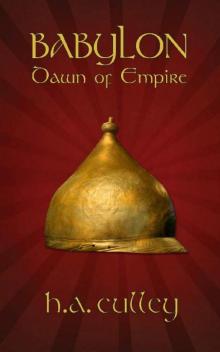 Dawn of Empire
Dawn of Empire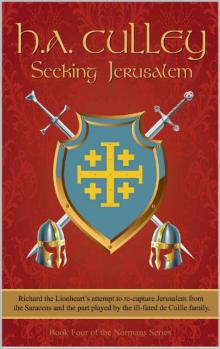 Seeking Jerusalem
Seeking Jerusalem The Strategos
The Strategos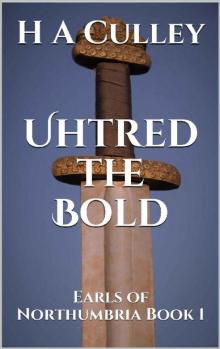 Uhtred the Bold
Uhtred the Bold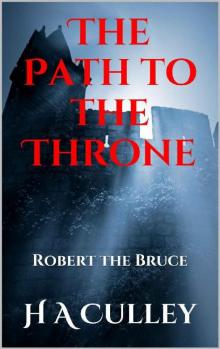 The Path to the Throne
The Path to the Throne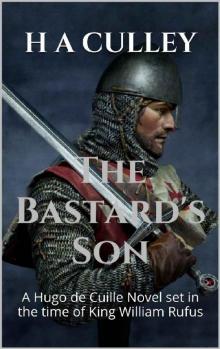 The Bastard's Son
The Bastard's Son Alexander
Alexander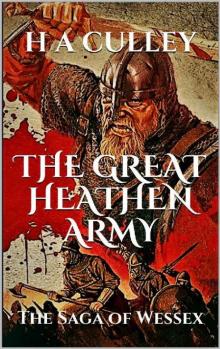 The Great Heathen Army
The Great Heathen Army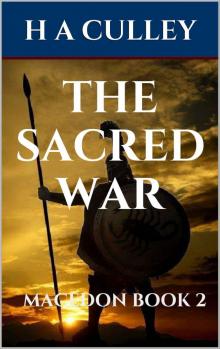 The Sacred War
The Sacred War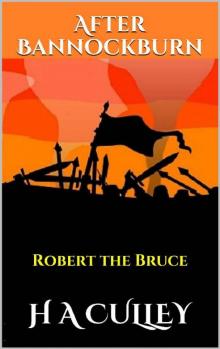 After Bannockburn
After Bannockburn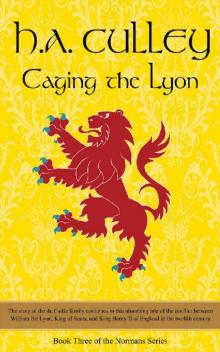 Caging the Lyon
Caging the Lyon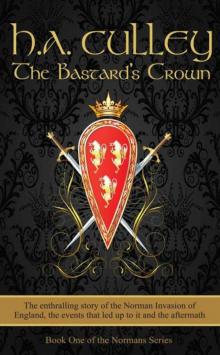 The Bastard's Crown
The Bastard's Crown WHITEBLADE
WHITEBLADE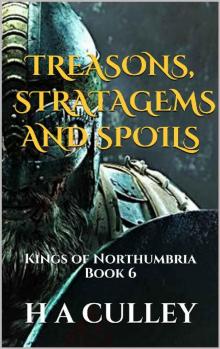 TREASONS, STRATAGEMS AND SPOILS: Kings of Northumbria Book 6
TREASONS, STRATAGEMS AND SPOILS: Kings of Northumbria Book 6 THE POWER AND THE GLORY: Kings of Northumbria Book 4
THE POWER AND THE GLORY: Kings of Northumbria Book 4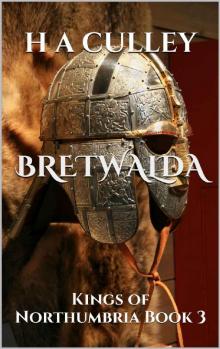 BRETWALDA: Kings of Northumbria Book 3
BRETWALDA: Kings of Northumbria Book 3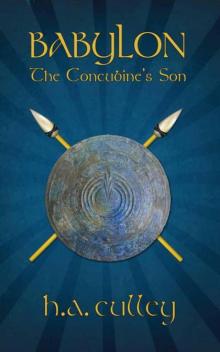 The Concubine's Son
The Concubine's Son The Fall of the House of Æthelfrith: Kings of Northumbria Book 5
The Fall of the House of Æthelfrith: Kings of Northumbria Book 5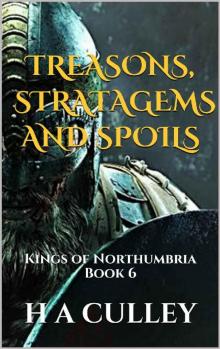 TREASONS, STRATAGEMS AND SPOILS
TREASONS, STRATAGEMS AND SPOILS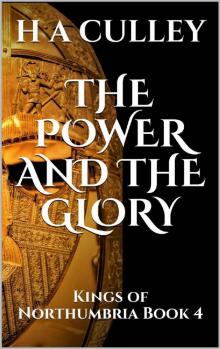 THE POWER AND THE GLORY
THE POWER AND THE GLORY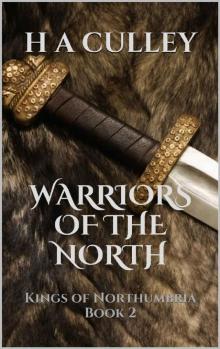 WARRIORS OF THE NORTH
WARRIORS OF THE NORTH The Fall of the House of Æthelfrith
The Fall of the House of Æthelfrith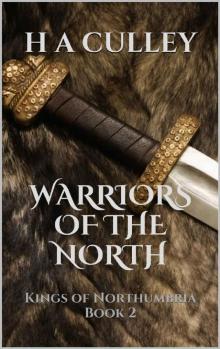 WARRIORS OF THE NORTH: Kings of Northumbria Book 2
WARRIORS OF THE NORTH: Kings of Northumbria Book 2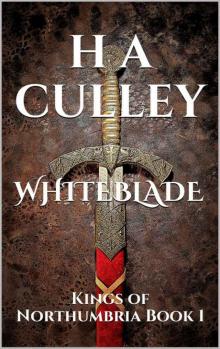 WHITEBLADE: Kings of Northumbria Book 1
WHITEBLADE: Kings of Northumbria Book 1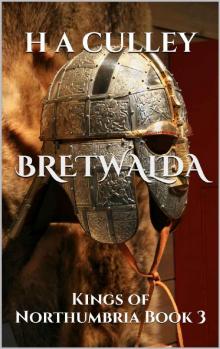 BRETWALDA
BRETWALDA